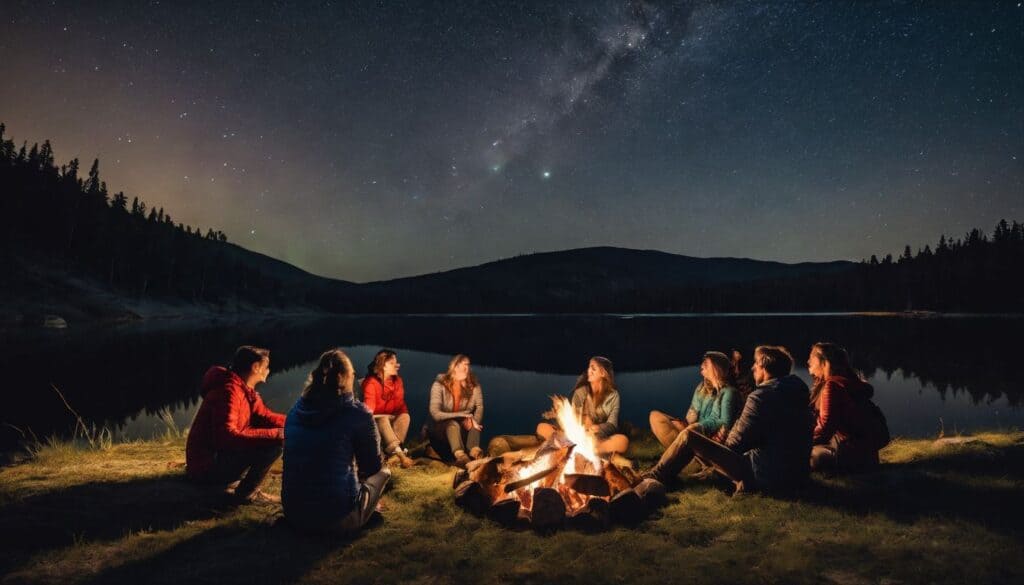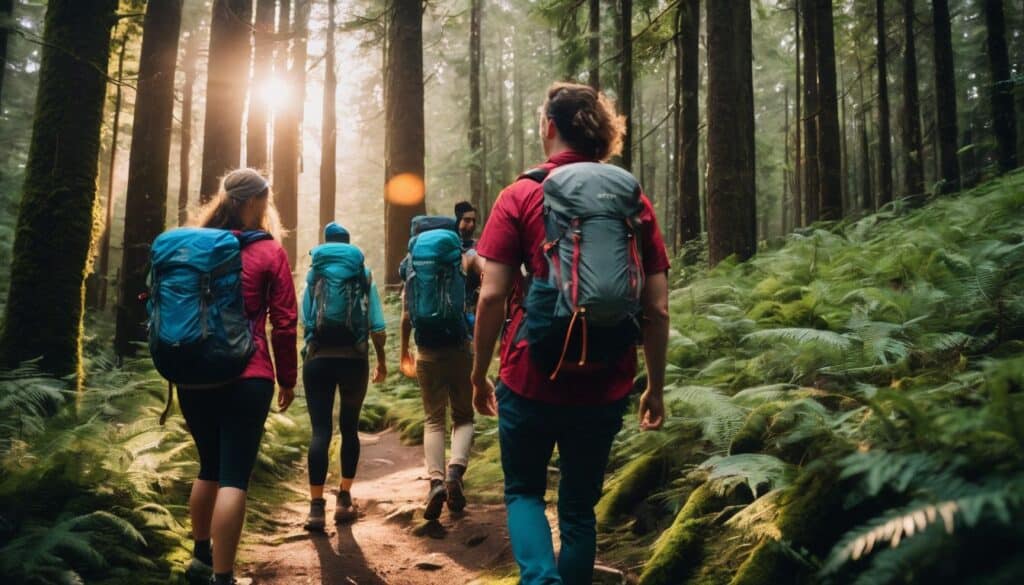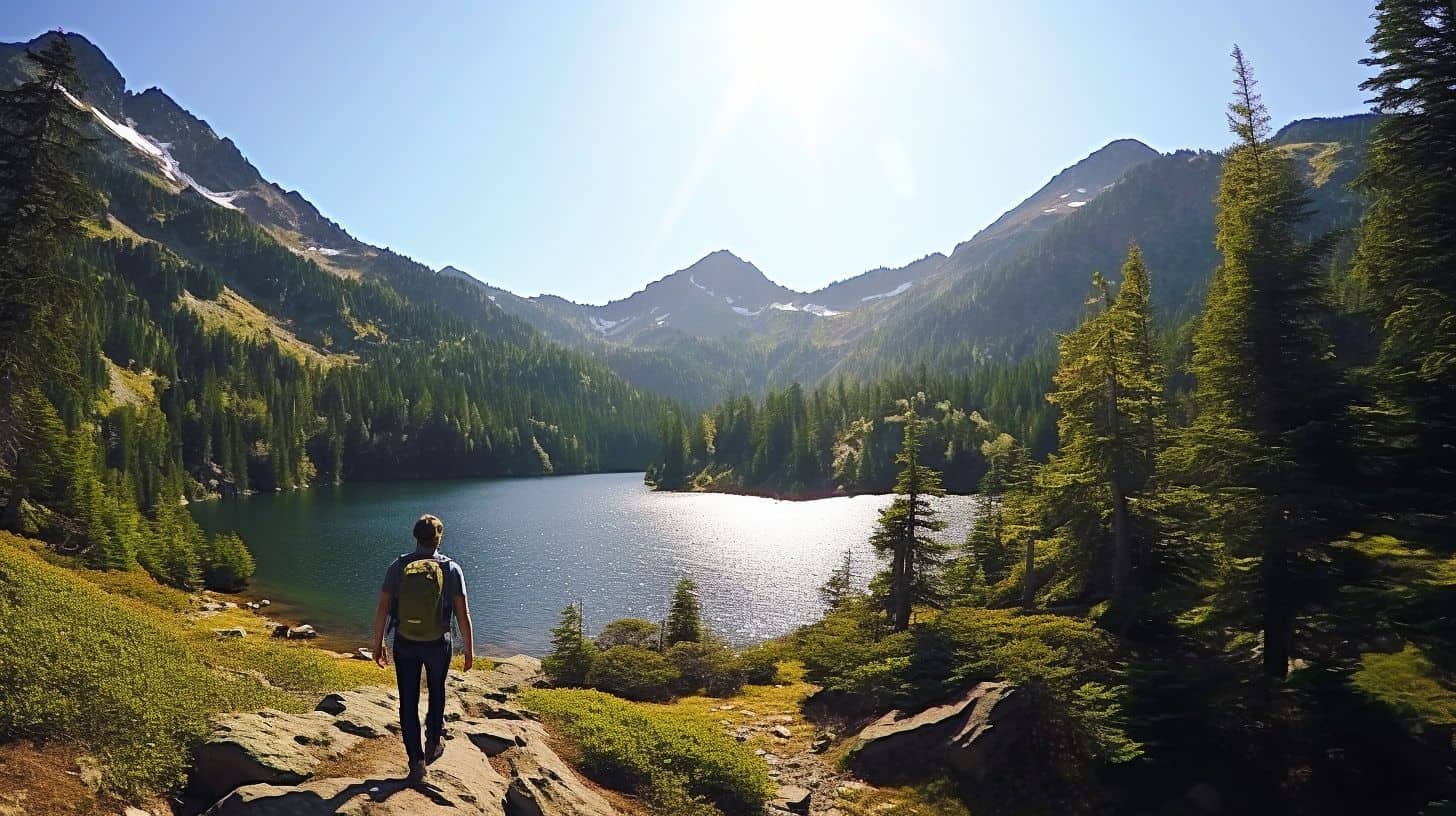Dispersed camping offers a unique opportunity to immerse yourself in nature while minimizing your environmental impact. This comprehensive guide explores the principles and practices of eco-friendly dispersed camping, providing you with the knowledge and tools to responsibly enjoy the great outdoors in 2025.
Key Takeaways
- Dispersed camping allows for a more immersive nature experience outside of established campgrounds.
- Practice Leave No Trace principles to minimize environmental impact while camping.
- Choose sustainable campsites and use eco-friendly gear to reduce your ecological footprint.
- Proper waste management and campfire safety are crucial for preserving natural spaces.
- Respect wildlife and other campers to maintain the integrity of the outdoor experience.
Understanding Dispersed Camping
Dispersed camping, also known as primitive camping, refers to camping outside of designated campgrounds in undeveloped areas. This type of camping is typically allowed on National Forest or Bureau of Land Management (BLM) land in the United States, offering campers a more immersive nature experience and increased self-sufficiency.
Principles of Eco-Friendly Dispersed Camping
Low-Impact Camping Philosophy
Low-impact dispersed camping involves using sustainable equipment like renewable energy sources and eco-friendly stoves and managing waste efficiently while having a minimal impact on the environment. This approach ensures that natural areas remain pristine for future visitors and wildlife.
Related: What Is Pioneer Camping?

Leave No Trace
The Leave No Trace principles form the foundation of eco-friendly camping practices. These guidelines help preserve the natural environment and ensure that future generations can enjoy unspoiled wilderness. The seven principles include:
- Plan Ahead and Prepare
- Travel and Camp on Durable Surfaces
- Dispose of Waste Properly
- Leave What You Find
- Minimize Campfire Impacts
- Respect Wildlife
- Be Considerate of Other Visitors
Choosing a Sustainable Campsite
When selecting a campsite for dispersed camping, it’s crucial to minimize your impact on the environment. Here are some guidelines to follow:
Environmental Considerations
- Camp on durable surfaces: Choose established campsites, rock, gravel, or dry grasses to set up your tent.
- Maintain distance from water sources: Set up camp at least 200 feet away from lakes, streams, and other water bodies to protect fragile ecosystems and prevent water source contamination.
- Avoid creating new campsites: Use existing sites whenever possible to prevent further disturbance to the area.
- Keep your campsite small: Minimize the area of impact by concentrating your activities in a small area.
Related: Camping Hygiene: Staying Clean in the Great Outdoors
Terrain and Accessibility Factors
Consider soil degradation potential, weather conditions, terrain characteristics, and accessibility when choosing your campsite. Areas with compacted soil are preferable to fragile vegetation. Also consider natural shelter from wind and potential weather changes during your stay.

Transportation Impact Reduction
| Type of Travel | Environmental Impact | Steps to Reduce Impact |
|---|---|---|
| Road Travel | Road travel, especially by car or van, offers easy access to amenities but can have a higher climate impact due to fuel consumption. | Opt for a more fuel-efficient vehicle, carpool when possible, and plan your route to minimize driving time and distance. |
| Off-Road Travel | Off-road travel can potentially cause damage to plant life and soil structure, leading to erosion and habitat destruction. | Stick to established trails and avoid creating new ones, practice responsible off-roading by avoiding sensitive areas, and use eco-friendly vehicles when possible. |
Related: How To Find Free Dispersed Camping In National Forests
Eco-Friendly Camping Gear and Practices
Sustainable Camping Equipment
Investing in eco-friendly camping gear can significantly reduce your environmental footprint. Consider the following options:
- Tents made from recycled materials: Look for tents constructed using recycled polyester or nylon.
- Biodegradable tent stakes: Opt for stakes made from bamboo or wood instead of plastic or metal.
- Solar-powered gadgets: Use solar-powered lanterns and chargers to minimize energy consumption.
- Bamboo camp furniture: Choose camp chairs and tables made from sustainable bamboo.
- Eco-friendly sleeping bags and pads: Select options made from recycled or sustainable materials.
Related: Do I Need Biodegradable Soap for Camping?
Low-Impact Camping Practices
- Pack it in, pack it out: Bring all trash and leftover food back with you, leaving no trace of your visit.
- Use a camping stove: Minimize campfire impacts by using a portable stove for cooking.
- Practice proper waste disposal: Bury human waste 6-8 inches deep and at least 200 feet away from water sources.
- Respect wildlife: Observe animals from a distance and never feed them.
Campfire Safety and Management
While campfires are an iconic part of the camping experience, they can have significant environmental impacts. Follow these guidelines for responsible fire management:
- Check fire restrictions: Always verify current fire regulations before planning a campfire.
- Use established fire rings when available.
- Keep fires small and under control.
- Burn all wood and coals to ash, then extinguish completely.
- Scatter cool ashes when possible to minimize visual impact.
- Manage fuel consumption wisely when using open fires or stoves.
Related: Cooking in the Wild: Best Practices for Dispersed Camping Meals

Waste Management in the Backcountry
Proper waste management is crucial for maintaining the pristine nature of wilderness areas. Follow these practices:
- Pack out all trash, including food scraps and litter.
- Minimize the use of single-use items and packaging before your trip.
- Use biodegradable soap for washing dishes and yourself, and do so at least 200 feet away from water sources.
- For human waste, use established facilities when available. If not, dig a cathole 6-8 inches deep and at least 200 feet from water sources.
- Properly dispose of dishwater by straining it and scattering it at least 200 feet from water sources.
Related: Managing Waste While Camping
Respecting Wildlife and Natural Habitats
Eco-friendly camping extends beyond environmental considerations to include respect for wildlife and their habitats:
- Observe wildlife from a distance and never approach or feed animals.
- Reduce noise pollution to avoid disturbing native animals.
- Store food securely to prevent wildlife encounters.
- Learn about local wildlife before your trip to understand their behaviors and needs.
- Avoid camping in areas that show signs of heavy wildlife use.

Seasonal Considerations for Dispersed Camping
Different seasons present unique challenges and opportunities for eco-friendly dispersed camping:
- Spring: Be mindful of muddy conditions that can lead to trail damage and erosion. Avoid camping in areas with new growth.
- Summer: Be aware of fire danger and heat-related impacts on the environment. Camp in shaded areas when possible to reduce your energy needs for cooling.
- Fall: Be prepared for changing weather conditions and shorter daylight hours. Use fallen leaves as natural ground cover under tents.
- Winter: Minimize impact on snow-covered vegetation and be mindful of increased energy needs for heating.
Related: Seasonal Dispersed Camping: Tips for Every Time of the Year
Legal Considerations and Permits
Before heading out for dispersed camping, research the legal requirements for your chosen area:
- Check if permits are required for overnight stays.
- Understand the maximum stay duration (typically 14 days in most National Forests).
- Verify if there are seasonal closures or restrictions.
- Know the rules regarding group size limitations.
- Research specific regulations about campfires, waste disposal, and wildlife protection.
Conclusion
Eco-friendly dispersed camping offers a unique opportunity to connect with nature while preserving its beauty for future generations. By following Leave No Trace principles, choosing sustainable campsites, using eco-friendly gear, and practicing responsible camping techniques, you can minimize your impact on the environment while enjoying the great outdoors.
Remember that sustainable camping practices include proper transportation planning, campsite selection, waste management, wildlife respect, and fire safety. By making environmentally conscious choices throughout your camping experience, you’ll help ensure that pristine natural areas remain available for everyone to enjoy.
The next time you venture into the wilderness for dispersed camping, challenge yourself to leave absolutely no trace of your visit. Future generations of outdoor enthusiasts—and the wildlife that calls these places home—will thank you for your commitment to eco-friendly camping practices.

Leave a Reply